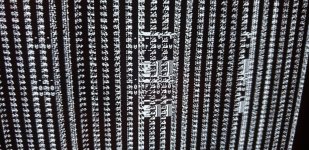T-Squared
Veteran Member
I covered this partially in a different topic, but I put it here, given its connection to all electronics.
I think, last year, during my attempt at upgrading the memory of my Macintosh 128k, I accidentally killed the 68000 CPU.
My reasoning is that the system no longer gives me the bell tone at startup (now a bad staticky screech), and the video is extremely garbled.
Even trying to use a 512k ROM set gives me bad images, even worse than before.
Should I clip out the old CPU and replace it?
I think, last year, during my attempt at upgrading the memory of my Macintosh 128k, I accidentally killed the 68000 CPU.
My reasoning is that the system no longer gives me the bell tone at startup (now a bad staticky screech), and the video is extremely garbled.
Even trying to use a 512k ROM set gives me bad images, even worse than before.
Should I clip out the old CPU and replace it?

